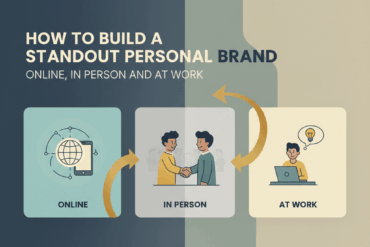By Marija Zivanovic-Smith
As marketers navigate the convergence of Web 2.0 and what many are calling Web3, we sit at an important inflection point. Many may be wondering, “Where do we go next?”
Let me first take a moment to define Web 2.0 and Web3.
Web 2.0: The current state of the internet and a digital universe of user-generated content that gave rise to e-commerce, social media, and search engines. It allowed companies to benefit from the collection and monetization of data from individuals.
Web3: The next iteration of the web with token-based commerce, blockchain technology, and its own language and communications. It’s given rise to decentralization and placing ownership of data in the hands of users versus a central authority or large companies.
Just as Web 2.0 brought a kaleidoscope of new opportunities from smartphones to social networks, Web3 is bringing the next wave of tools and innovations.
WILL WEB 2.0 DISAPPEAR?
Everywhere you go, you are exposed to marketing. Billboards, print mailers, and signage still thrive. The rise of Web 2.0 added channels, like email, Twitter, and LinkedIn, increased diversification, and marketing saturation. Enter Web3, where digital assets and digital wallets are another playing field.
According to Smart Insights, as of February 2022, the average email open rate was 16.97%. That reflects a drop from what marketers generally saw at 24% from 2015 to 2018. It is clear that individuals are already not responding to email marketing as frequently. Messaging apps and the ability to make connections and transactions via social platforms have been on the rise. That said, email still holds significant power as a marketing tool with 4 billion daily email users—a number that continues to rise—and an impressive ROI of $36 for every $1 spent, according to Hubspot. Email marketing revenue is estimated to reach $11 billion by the end of 2023, according to Statista.
Just like direct mailers are often still part of a marketing strategy, it is likely email and social media are here to stay. While the ideals and dynamic economies available via social tokens in Web3 are something to strive for, I believe we will not see a disappearance of what we have in Web 2.0 but rather a modernization and democratization.
HOW SHOULD MARKETERS BE THINKING ABOUT WEB3?
Data is quickly becoming the world’s most prized resource. In Web3, all user data is public (generally speaking). However, what is NOT public is the identity of the individual, unless they choose to make it so. Users will have more control over their privacy and likely will use their data as an ownership asset—meaning as a marketer, you will need to have a direct relationship with consumers who share their preferences. This represents a redistribution of power and a new level of privacy, transparency, and control for the average consumer. It also means utility is king and that marketers have to provide the right tools to the right users.
I believe audience expectations will shift, especially when it comes to the channel, frequency, and confidentiality of communications. Communities—not corporations—move to centre stage.
KEY STRATEGIES
With that in mind, here are a few key strategies to help marketers make the transition to Web3 more successful:
1. Focus on authenticity. Digital wallets are public and contain things of value (tokens), whereas email or social media accounts can’t be characterized in the same way. They are free to create—including content, clicks, and likes. This has given way to scams and security issues. I’ve found consumers are increasingly becoming leery of being a part of online platforms or making online purchases. This can provide brands with an opportunity to leverage Web3 technology that offers a level of authenticity and trust as they integrate technology into their own platforms.
2. Be willing to experiment and get messy. We’re sitting on the cusp of Web3 without it being fully here. If you wait for Web3 to be fully established before you “dive in,” you could risk meeting the same fate as companies that waited too long to get on board with Web 2.0.
This is the time to try strategies that may or may not work. I believe the most successful NFT projects so far have offered something creative and original. Tiffany’s NFTiff collection is a good case study of a brand navigating a Web3 marketing campaign. Financially, the limited-edition collection was a success, with the 250 NFTs selling out in 22 minutes at 30 ETH (around $50,000) each. While the NFTiff collection netted Tiffany & Co. the equivalent of $12.5 million, the release and resulting community response also serve as an important lesson for using Web3 as a marketing channel.
3. Take a community-first approach. In an increasingly digital world, people are craving communities that share their ideals, goals, and aesthetics. One of the biggest values in the Web3 space is access to that community. In my experience, belonging is becoming the main driver of loyalty, with the product being secondary. From a marketing perspective, lean more on building and nurturing strong communities. The NFTiff collection was born out of a tweet from Tiffany’s EVP of Product and Communications, who shared images of his custom CryptoPunk pendant. The response drove the storied brand to take its first step into Web3.
4. Create new value. Look at Web3 as an opportunity to envision and create new value for consumers and reconnect to company values. People are seeking fresh ideas, creativity, and innovation. In turn, art and technology intersect. Creativity is no longer viewed through a one-dimensional lens. Consumers expect brands to create and live value.
Ultimately, marketers should take calculated risks and keep in mind that Web3 opportunities are uncharted waters of both risk and innovation. That makes it especially important to work with trusted brands and services with a track record of protecting their users and doing right by customers.
As a marketing leader, the question to ask yourself shouldn’t be “What do I need to start/stop doing?” but “How do I start evolving my strategy so Web 2.0 and Web3 work together to benefit our brand?”
Feature Image Credit: luckybusiness/Adobe Stock]
By Marija Zivanovic-Smith
Marija Zivanovic-Smith is IEX‘s Chief Marketing & Communications Officer, helping drive growth as we enter the digital asset space.





